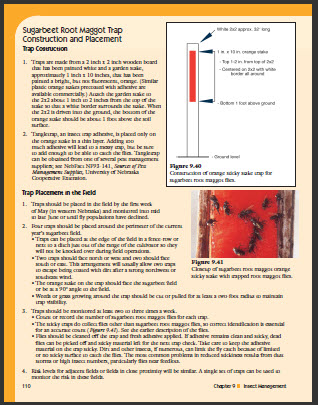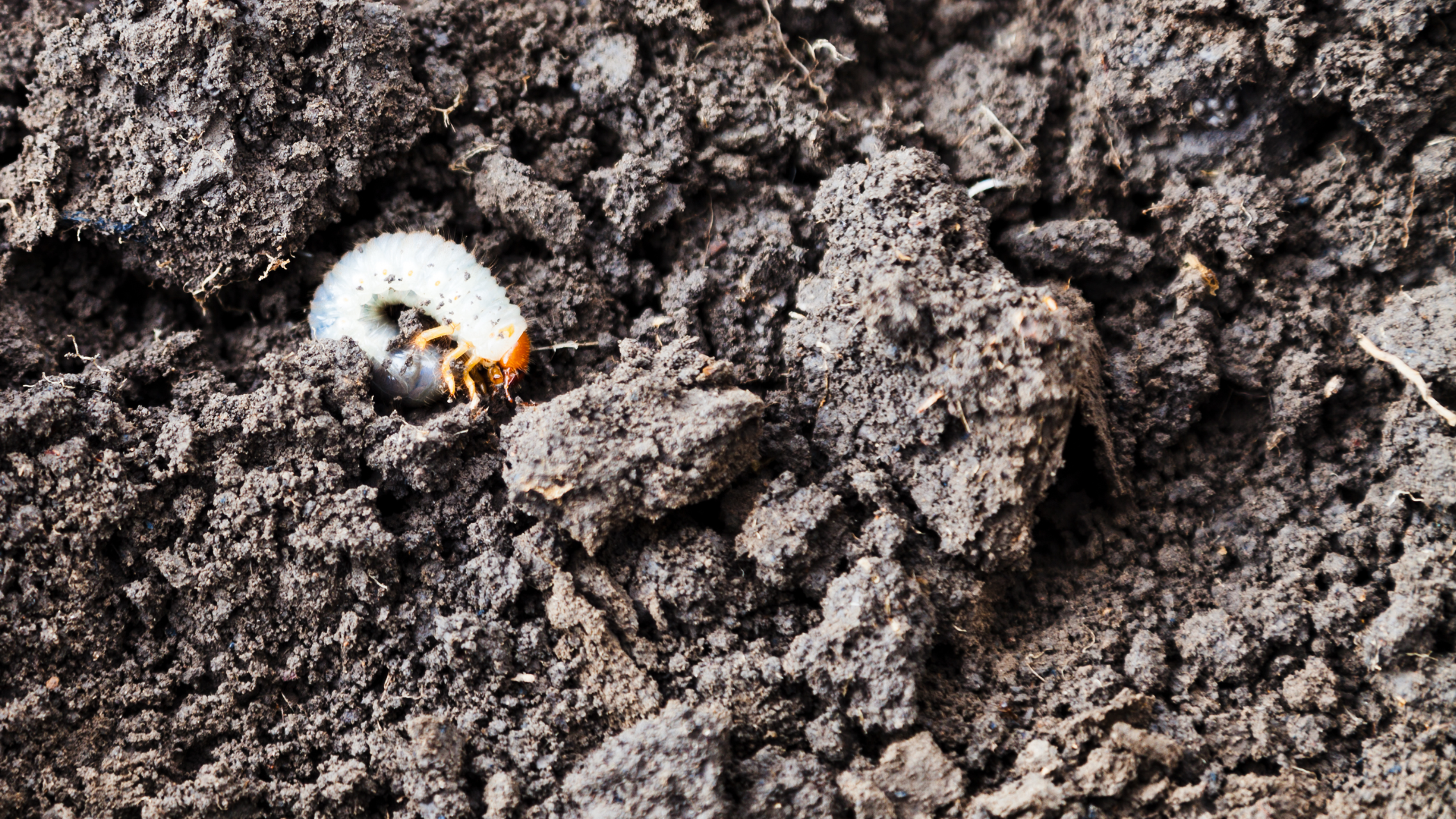Sugarbeet Insect Management
Establishing an insect management program for sugarbeet insects is important to avoid economic losses. The first step to develop an insect management strategy is to identify the pest that is stressing your crop and then learn about the insect’s biology and lifecycle. The next step is to use effective field scouting procedures at the proper time to understand the damage the insect causes to plants and its damage potential.
Management options to control the insect include:
- Cultural Practices (e.g. irrigation practices, varietal resistance, cultivation, rotations)
- Biological control (e.g. effects of predators and parasites)
- Chemical control
Insecticide is often required to keep insect populations below economically damaging levels. Following a strict management program of pest identification, field scouting techniques and use of economic thresholds can help producers avoid unnecessary costs and negative impacts of insecticide use.
The complete Insect Management section of the Extension Publication – Sugarbeet Production Guide, EC156, is available online. (PDF 4.32MB, 36 pages)
The Insect Management Section covers the following topics:
Insect problems vary across the High Plains, but this section covers many of the most pervasive offenders in this area. This section will help producers learn more about how to identify and understand the lifecycles of the different insects that affect sugarbeet production, the plant damage and response, and finally the management of each type of insect.
The guide covers three kinds of insects: seed/seedling attacking; foliage feeding, and root feeding. Eighteen of the most common insect varieties found to affect sugarbeet production in Western Nebraska are discussed.
Seed/Seedling Attacking Insects:
- Spinach carrion beetle
- Cutworms
- Flea beetle
- Garden symphylan
- Wireworms
Foliage Feeding Insects:
- Aphids
- Beet leafhopper
- Blister beeetle
- False chinch bug
- Grasshoppers
- Spinach leafminer
- Lygus bug
- Spider mite
- Webworm
- Late season defoliators
Root Feeding Insects:
- Sugarbeet root aphid
- Sugarbeet root maggot
- White grub

Special Section: Sugarbeet Root Maggot Trap Construction and Placement
Included in the Sugarbeet Production Guide is a complete description of how to build and place a sugarbeet root maggot trap. This trap can be used to help producers to monitor the development of fly populations in and around sugarbeet fields in May and June.
Insecticide Application
When considering insecticide to control pest populations, producers need to factor in their application rates, use of herbicides, and the weather before and after application in order to minimize the stress and damage that are caused to plants throughout the process. Three types of insecticide applications are available to sugarbeet producers:
- Insecticides
- Foliar Insecticides
- Seed Treatments
Managing Insect Resistance
It is important to consider the potential for insecticide resistance in developing insect management strategies. Consider the following points to reduce the potential for developing insecticide resistance:
- Use integrated pest management practices to reduce potential for pest problems whenever possible.
- Use insecticides only when necessary, scout fields for insect presence and treat only when it is cost-effective to do so.
- Rotate insecticides between insecticide classes to reduce selective pressure on the insect population.
- Scout for the development of insecticide resistance by evaluating the effectiveness of treatments.
This section of the Sugarbeet Production Guide – EC156 was prepared by Gary L. Hein and Gregory D. Johnson.
Related Links
- Sugarbeet Production Guide - EC156
- Gary Hein, Director - Doctor of Plant Health Professional Program and Professor of Entomology, University of Nebraska Department of Entomology
- University of Nebraska Department of Entomology
- High Plains Integrated Pest Management Guide for Colorado, Western Nebraska, Wyoming, Montana and Western South Dakota
- Insect Almanac – Sugarbeet Insects
- Sugarbeet Production Guide - EC156 – Chapter 15: Scouting Calendar and Injury Diagnostic Guide
- NF95-217 Sugarbeet Root Maggot Management
